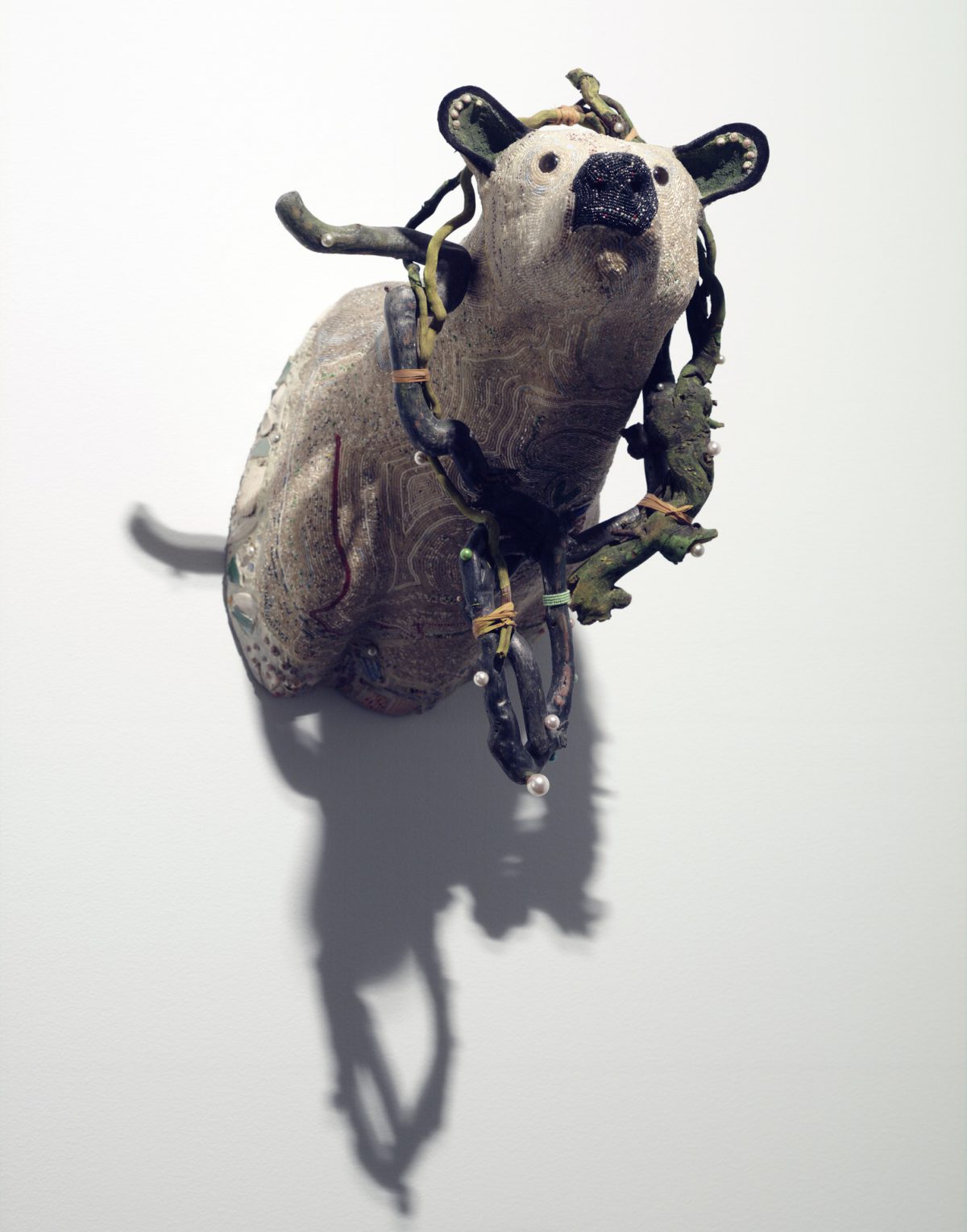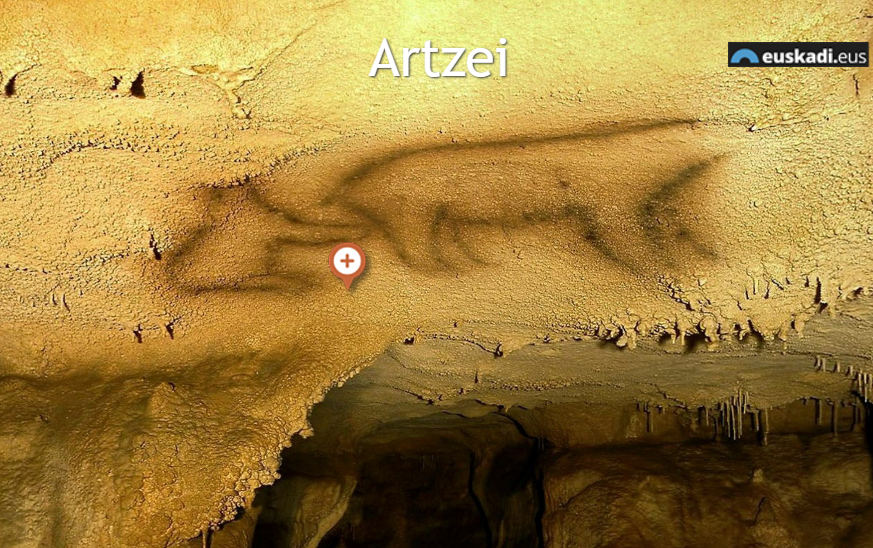Object of the Week: Sea Bear

At first glance, this might look like a typical trophy head found in a mountain lodge, but Sherry Markovitz has turned the conventional idea of a hunting trophy on its head in the creation of Sea Bear.
“I am after beauty, with an edge of uncertainty, vulnerability, and power,” she says of her artistic process. “I use animal metaphors to explore issues of intimacy, closeness, and separation.”1 Sea Bear’s tranquil and inquisitive stare is a powerful celebration of peace and gentleness, highlighting a species historically honored as a dynamic part of a balanced ecosystem.
As the subject matter of countless forms of creative expression, polar bears may have appeared in art as early as 17,000 years ago in the Paleolithic cave of Ekain in the Basque Country of Northern Spain. Below, two outlines resembling an adult and juvenile can be seen on the ceiling. Their elongated bodies look remarkably like polar bears. Perhaps they drifted south with pack ice off the coast of England during the icier years rounding out the Pleistocene.2 What we can be sure of is that they’ve been depicted in art and lore ever since.
Among the shared spiritual beliefs of the Inuit, polar bears are a living representation of resilience and determination, imbued with souls and regarded as brothers in a time when we did not take pre-eminence over other animals. Nanook, an almost man-like master of bears decided if hunters deserved success in their endeavors or punishment for violating taboos.3
This bear, crafted of wood, beads, shells, fabric, paint, and papier-mâché, is the culmination of intertwined memories and experiences the artist had with nature and her loved ones.
“Emotionally, Sea Bear is circular, all the stuff on it is traceable to significant walks. Walks with my mother in Florida, walks in Port Townsend with Peter (during which time her son Jake was conceived), walks alone to find the ‘root’ pieces at Discovery Park. Walking on the beach is such a drifting and wonderful activity.”4
From a distance, Sea Bear offers up the impression of a familiar creature. Its intricate and subtle beadwork appears at first to be deceptively monochromatic. A step closer, however, reveals an otherworldly figure clad in the ocean’s bounty emerges. The beads are revealed to be six or seven shades of color, like gentle eddies of ermine pebbles undulating over sand. The eye is drawn towards the shadows cast by exhibition lighting on the bear’s outstretched neck and jaw, flowing into the sinuous curves of its pelagic collar.
“I see the ‘collar’ as directional—the wood shape and the bear shape working in tandem was the key (formally) on this one. I think the large pearls pulled the shape back to the bear. It’s funny, as I get further away from a piece, it is, in fact, the abstract concerns that remain the most visible to me.”5
Seattle is treasured for the water which surrounds it. From Lake Washington, fed by so many vital creeks and rivers, to the misty solitude of salt-scoured beaches along the Olympic Peninsula. Water inexorably affects our physical and cultural landscapes, it sustains and determines our way of life, and shapes our histories slowly over time like glaciers carving mountains. Sea Bear is an opportunity to reconnect to this life-giving force, to step outside of our immediate reality and transport us to the shores of our minds choosing where we can know the peace of our own walk along the water’s edge.
See this work on view now in Our Blue Planet: Global Visions of Water at our downtown location through May 30.
– Danelle Jay, SAM Curatorial Division Coordinator
1 Sherry Markovitz, quoted in 50 Northwest Artists: A critical Selection of Painters and Sculptors Working in the Pacific Northwest, ed. Bruce Geunther, San Francisco: Chronicle Books, 1983, pages 80–81.
2 Digitized interior of Ekain, courtesy of the Society of Sciences Aranzadi.
3 C.R. Harrington, The Evolution of Arctic Marine Mammals, ed. A. Berta, Ecological Applications, Volume 18, Issue sp2, 2008, pages S23–S40.
4 Sherry Markovitz, Channel 7 News, Linda Farris Gallery, Seattle, 1992.
5 Sherry Markovitz, letter to Vicki Halper, August 14, 1991.
Image: Sea Bear, 1990, Sherry Markovitz, wood, beads, shells, fabric, paint, papier mâché, 25 x 17 x 29 in., Gift of Terry Hunziker, 90.3, © Sherry Markovitz.
